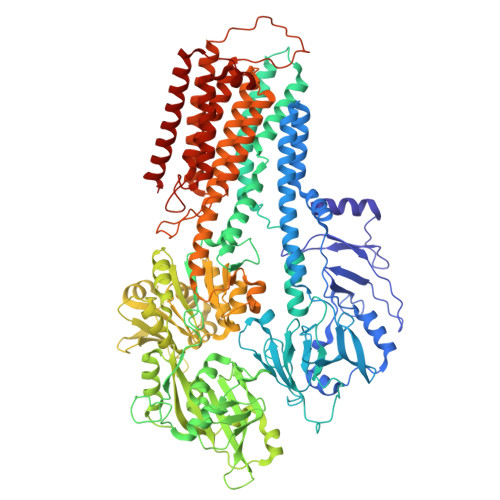ATP13A1 engages SEC61 to facilitate substrate-specific translocation.
Yang, X., Li, Y., Yang, C., Li, T., Fang, Z., Feng, Z., Liao, J., Zou, Y.(2025) Sci Adv 11: eadt1346-eadt1346
- PubMed: 40498833
- DOI: https://doi.org/10.1126/sciadv.adt1346
- Primary Citation of Related Structures:
9JBM, 9JBR, 9JBX, 9JBZ - PubMed Abstract:
The accurate targeting of proteins to their designated cellular compartments is essential for maintaining proper cellular architecture and function. However, interpreting and sorting the highly variable targeting sequences in secreted and membrane proteins present a substantial challenge for achieving precise localization within the secretory pathway. In this study, we demonstrate that atypical signal sequences, characterized by high hydrophobicity and/or the absence of characteristic charges, are recognized by the signal recognition particle and targeted to the endoplasmic reticulum in a reverse orientation. These misoriented signal sequences are subsequently dislocated by the P5A-ATPase ATP13A1 and delivered to SEC61 for further translocation. Using cryo-electron microscopy, we determined the structures of human ATP13A1 in multiple conformations (3.40- to 3.87-angstrom resolution), revealing key residues within its substrate-binding pocket that engage signal sequences through polar interactions. Collectively, our findings elucidate a comprehensive, substrate-specific translocation pathway that ensures both high efficiency and fidelity in protein subcellular localization.
Organizational Affiliation:
School of Life Science and Technology, ShanghaiTech University, Shanghai 201210, China.
















